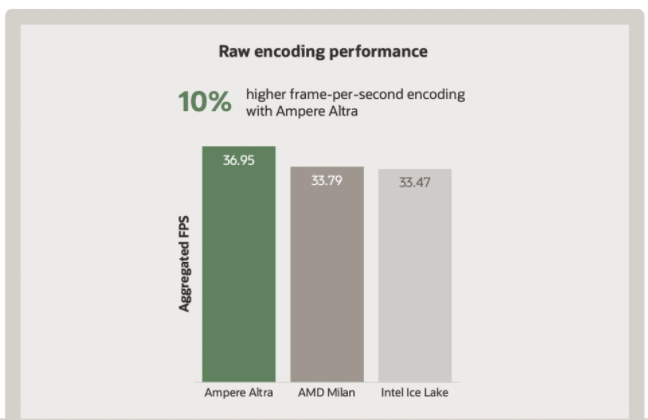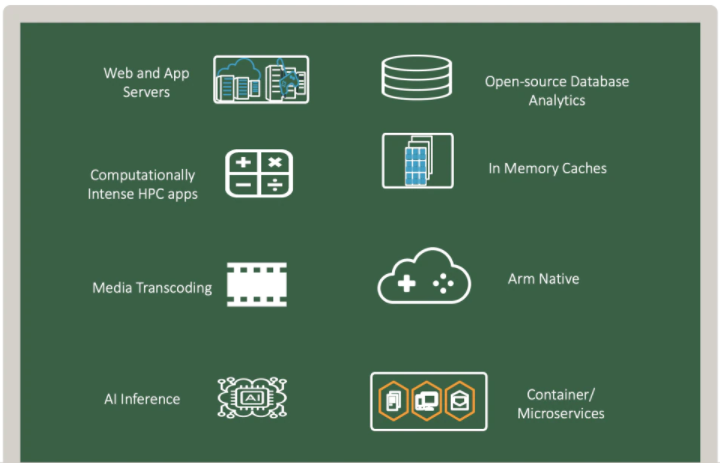To date, 180 billion Arm-based processors have been included in cell phones, IoT sensors and other devices. Today, this technology has evolved to support hyperscale data centers and cloud computing. Arm-based processors are attractive to cloud customers because of their linear scalability, predictable performance, and ultra-high core density and affordability. With Arm-based cloud computing, customers can run existing loads more cost-effectively and build new applications with superior economics and performance.
Why choose Arm processors?
By introducing 64-bit computing to the Armv8 architecture and the Neoverse Neoverse family, Arm entered the server market with partners such as Ampere Computing. This shift has been accelerated by the rise of hardware virtualization and cloud computing. In the processor industry, multi-CPU architectures will once again become the norm. Customers will once again have the diversity and choice to build next-generation applications, and Arm, X86 and GPUs are leading the way.
The Arm Neoverse N1 CPU architecture is designed for the data center and cloud infrastructure space. It provides a high core count server-class SoC subsystem with the power, functionality and scalability necessary to accelerate the transition to scalable cloud and edge infrastructures. It fundamentally changes the performance equation for hyperscale data centers and cloud computing by doing more with less energy than traditional technologies.
Ampere Computing’s Altra processors are based on the Neoverse N1 CPU architecture. ampere has taken the N1 platform and integrated its own innovations to create a SoC built for applications across hyperscale cloud data centers. the N1 Arm processors feature higher thread counts, higher CPU frequencies and greater core density, which helps enable.
Breakthrough computing performance
Neoverse N1 Arm CPUs are specifically designed and optimized for high-performance and hyperscale data centers. These CPUs deliver sustainable, full-frequency performance through a single-threaded core architecture to run loads with consistent and predictable performance while achieving ideal scalability. The cache architecture of these CPUs is suitable for large, branch-intensive infrastructure loads.
Arm processors, such as Ampere’s Altra processor, feature a single-threaded per-core architecture that enables you to run loads with consistent and predictable performance while achieving ideal performance scaling. These cores are completely isolated from the noisy neighbors of other loads running on the same processor. ‘Vertically scaling’ loads that require an extremely high number of cores will benefit, while ‘horizontally scaling’ loads will also benefit from multiple instances of smaller VM configurations. Web servers, API gateways, media encoding, AI inference and other processor-constrained loads will see significant cost savings.
Riken’s Fugaku, the world’s fastest supercomputer, developed jointly with Fujitsu in Kobe, Japan, uses Fujitsu’s Arm-based system-on-a-chip, which ranks first on the list of processor architectures used to build supercomputers.

Higher security
The Ampere Altra processor single-threaded processor per core design eliminates potential thread security issues and provides isolation for customer loads. This helps reduce the risk due to side channel attacks. By having only one thread running per core, the execution engine, registers and L1/L2 cache are not shared between threads, thus minimizing the attack surface.
Arm TrustZone is a hardware security extension technology that creates an efficient system-wide security solution through hardware-enforced isolation built into the CPU. ARM TrustZone provides a secure execution environment by splitting computer resources between two execution worlds, the Normal World and the Secure World.
Designed for a wide range of loads
Arm server-side processors, such as Ampere Altra, are designed to meet the most demanding load requirements of a wide range of data center deployments.
- General purpose loads - web applications, application servers
- Cloud-native applications - Docker container-based applications
- Compute-intensive applications - media encoding, AI inference, HPC applications
- Arm native mobile app development - Android VM for developing and testing mobile apps
- In-memory caching and databases - Redis, Memcached databases, open source databases

Oracle’s Efforts in Arm Server Side Development
Oracle is working with leading ISVs such as Arm, Ampere, and GitLab and Jenkins to make Arm server-side development easy and cost-effective, and Oracle Cloud Infrastructure (OCI) is working with a number of partners to help customers convert, build and run Arm-based applications in the cloud at a very cost effective price. The Ampere Altra processor is based on the Arm aarch64 architecture and is now available on OCI for bare metal servers and virtual machines (VMs). Leading ISV developer tool providers such as GitLab, Jenkins, Rancher, Genymobile, open source organizations such as the Continuous Delivery Foundation (CDF), and technology partners such as Arm and Ampere, are working with Oracle to provide tools and software to build Oracle has released Oracle Linux, Java and MySQL distributions with aarch64 support, enabling you to quickly develop on the Arm computing platform.
Ampere Altra Introduction
The Ampere Altra processor is the industry’s first 80-core server processor that powers next-generation applications with superior performance, scalability and power efficiency.
- Delivers up to 160 cores in a dual-socket configuration
- Neoverse N1 Cores Arm v8 architecture
- No noisy neighbor issues - 1 thread/core
- 3.0 GHZ - runs all cores at maximum frequency
- 64 KB L1 I-cache and 64 KB L1 D-cache on each core
- Up to 1TB of memory
- Coherent Mesh Network (CMN)
- AI inference acceleration
- 7nm process technology
Ampere Arm processors are suitable for general-purpose loads as well as fast-growing applications such as data analytics, mobile applications, machine learning inference, in-memory databases, web hosting and cloud-native applications.